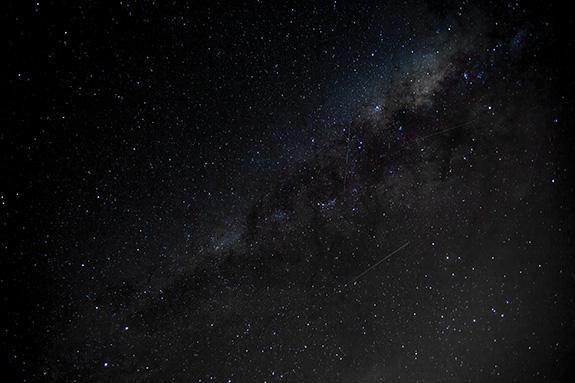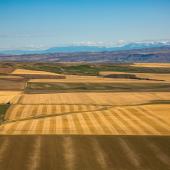Eye to the Sky
Summer's astronomical bucket-list.
Warm days and balmy nights—such as we have them in Montana in the summer—offer pleasant opportunities to enjoy the half of our personal outdoor world that lies overhead. There’s a lot of action in the sky if you know when and where to look—celestial happenings that ought not to be missed if the sky is clear. So put the following on your summer bucket-list, partnering each event with a different outdoor activity.
Summer full moons are particularly nice occasions to spend a little time outdoors with someone you like best. Since the full moons of summer lie lower in the sky than in other seasons of the year, they can seem bigger, and the moonlit landscape adds a touch of romance. Summer’s full moons have names—these are from the Farmer’s Almanac, as derived from certain Native American cultures.
June 8-9: the Strawberry or Rose Moon, when both the fruit and the flower are available.
July 8-9: the Buck or Thunder Moon, at the time when male deer start growing back their antlers and afternoon thunderstorms are prevalent.
August 6-7: the Sturgeon or Green Corn Moon, when the fish are harvested in the lakes and the corn grows tall.
Moon and Venus pairings are striking sights in the sky, and this summer offers repeated shows in the pre-dawn hours. Be an early bird on June 20, July 20, or August 19, get outside by 5am, and look east for a view of the slender crescent moon and the brightest planet in the sky just two or three degrees apart as we spy them from Earth.
Saturn at opposition occurs on June 15. This is the date when the ringed planet lies opposite the sun in the sky, rises at sunset, and is in the sky all night. It’s the time when the planet is closest to us, and is thus brightest in the sky. It will lie above the constellations Scorpius and Sagittarius in the south, just west of the brightest part of the Milky Way, and will make a lovely dark-sky sight before the waning gibbous moon rises around 1:30am on the morning of the 16th. Check with the Museum of the Rockies or the Southwest Montanan Astronomical Society for opportunities to see the planet through a telescope. If you have one yourself, enjoy Saturn’s rings, which are tipped to good advantage for viewing. Enjoy Jupiter as well while you’re at it; this planet lies farther west in the constellation of Virgo, appearing brighter than Saturn. Even a small telescope can reveal its major cloud bands and four biggest orbiting moons.

The Total Solar Eclipse on August 21 is a must-see event if you can travel south to Idaho or Wyoming into the narrow track where the moon will pass directly across the face of the sun, completely and dramatically blocking the solar disk from view for a few minutes. The result will darken the sky, produce a 360-degree sunset around the horizon, reveal the streaming solar corona, and perhaps ruby-red beads called prominences around the rim. If you’ll be in or around Bozeman on that day, the area will see a very deep partial eclipse; about 95% of the solar disk will be obscured at maximum eclipse around 11:35am, and the quality of the sunlight will briefly seem a little brassy and weird. (The partial eclipse begins around 10:15am and ends around 1pm.) Because the sun will never be completely covered—and because staring at any fraction of the brilliant solar disk can cause permanent eye damage—the eclipse in our area will not be safe to view without proper, certified eye protection. Check with the Museum of the Rockies or the Southwest Montana Astronomical Society for safe solar-viewing opportunities on this day.
The Perseid Meteor Shower, which peaks on the night of August 11-12, is an annual opportunity to lie out under the stars and watch bits of Comet Swift-Tuttle burn up in Earth’s atmosphere as our planet passes through the comet’s debris trail in space. In good years and under good sky conditions, as many as several dozen meteors or “shooting stars” per hour can be seen streaking across the sky from the northeast—from the direction of the constellation Perseus. This may not be one of the better years because the waning gibbous moon will rise around 11pm and brighten the sky, washing out the fainter meteors. But the brighter ones will still be visible, so find a dark spot with an open view of the sky, snuggle up with your favorite stargazing companions on lawn chairs or blankets facing northeast, and enjoy the celestial fireworks.
Jim Manning, formerly the executive director of the Astronomical Society of the Pacific in San Francisco, lived outside Bozeman for many years and has returned to live here once again.













